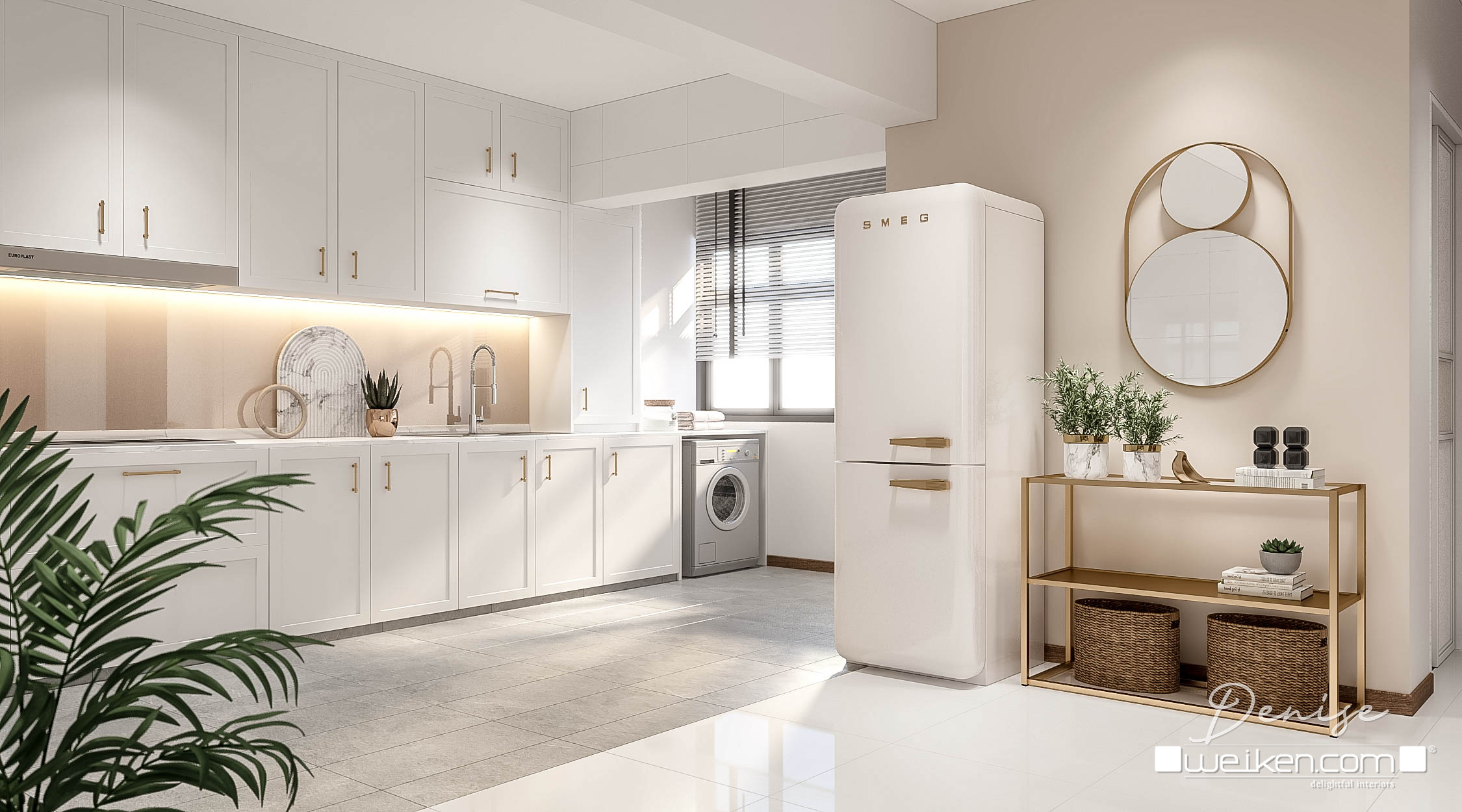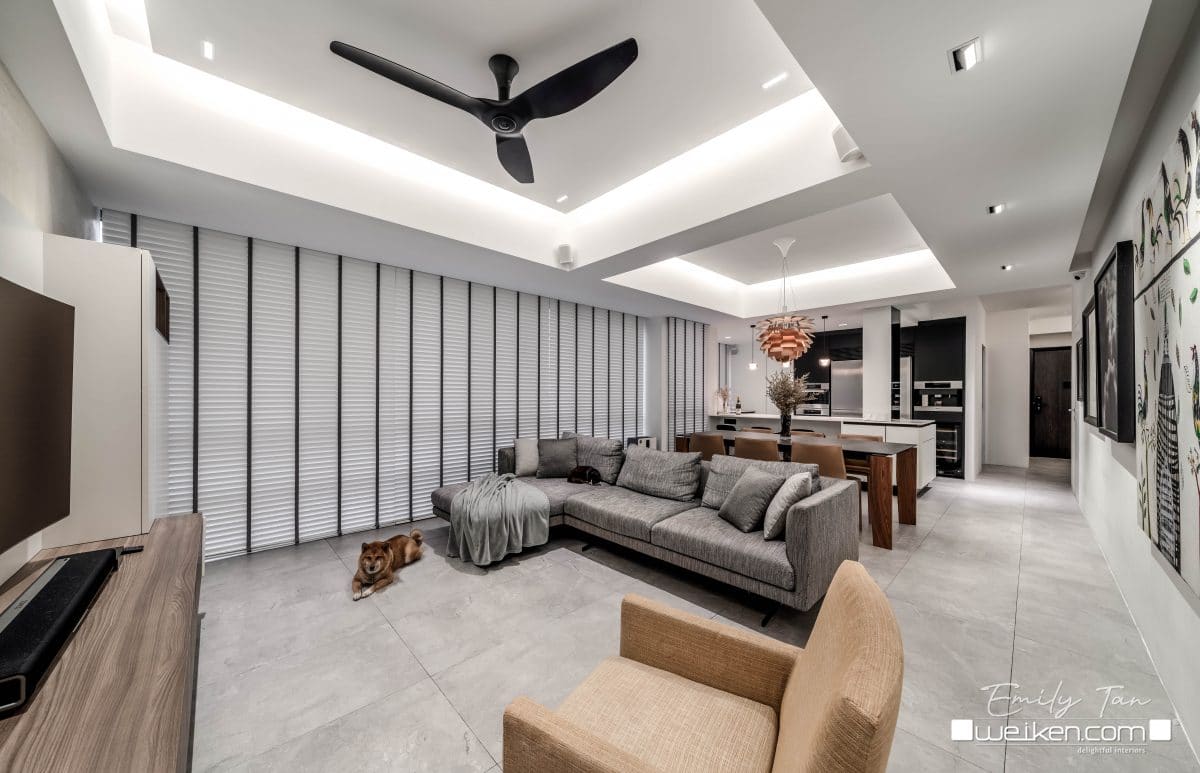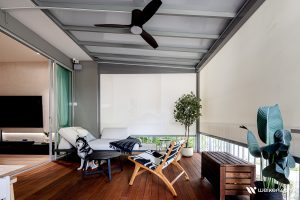QUICK NAVIGATION
-
INTRODUCTION
-
Defining Minimalist Interior Design
-
Origins and Evolution
-
Characteristics of Minimalist Interior Design
-
Elements of Minimalist Design
-
Modern Minimalist Interior Design
-
Japanese Minimalist Interior Design
-
Minimalist Muji Interior Design
-
Minimalist Wabi Sabi Interior Design
-
Conclusion
INTRODUCTION ABOUT MINIMALIST INTERIOR DESIGN
In the realm of interior design, the concept of minimalist interior design has gained significant popularity, offering a simple, uncluttered aesthetic that resonates deeply with individuals seeking serenity amidst the bustling city of Singapore.
This article will give you an insight into the definition, origin, characteristics, and other diverse expressions of minimalist interior design, shedding light on how elements like color, pattern, materials, and furniture contribute to this intriguing theme.
Defining Minimalist Interior Design
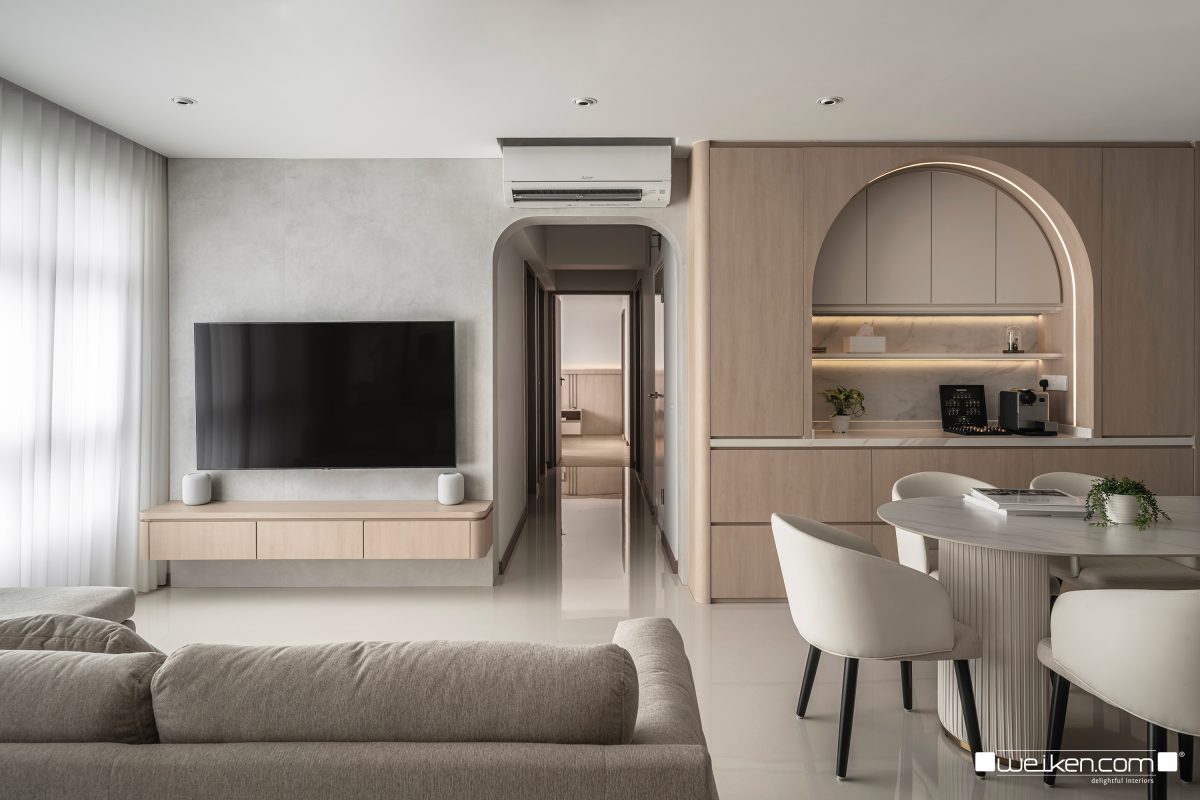
The minimalist design concept follows the “less is more” ideology by visionaries like Ludwig Mies van der Rohe who popularized this phrase. It is about creating spaces that are reductive, monochromatic, and clutter-free. This design style describes simplicity and elegance with clean lines, order, and harmony and accentuating the attractive architectural features of a space.
Trend Alert!
Minimalist interior design continues to be a prominent trend in Singapore’s home decor landscape for 2024 and 2025. Several indicators highlight its sustained popularity and evolution as below:
1. Integration of Warm Minimalism:
The minimalist approach in Singaporean homes is evolving to incorporate warmth and comfort. Designers are blending clean lines and uncluttered spaces with cozy, earthy tones such as beige, cream, and soft browns. Natural textures like wood, linen, and wool are being utilized to create inviting atmospheres that serve as serene retreats from urban life.
(Source: thesingaporean.sg/elevate-your-home-with-2025s-interior-design-trends-in-singapore)
2. Emphasis on Functionality and Sustainability:
There’s a growing focus on functional minimalism, especially suited for compact living spaces common in Singapore. This includes the use of multi-functional furniture and smart storage solutions to maximize space efficiency. Additionally, sustainable and eco-friendly materials such as bamboo, reclaimed wood, and recycled metals are being incorporated, reflecting a commitment to environmental consciousness.
(Source: interiordesigns.com.sg/blog/top-interior-design-trends-for-2024.html)
3. Adoption of Biophilic Design Elements:
Minimalist interiors are increasingly featuring biophilic design elements, integrating natural components like indoor plants, stone accents, and large windows. This approach fosters a harmonious connection between indoor spaces and nature, enhancing the overall well-being of occupants.
(Source: ecubespace.com.sg/minimalism-interior-design)
4. Color Palette Trends:
Neutral and monochromatic color schemes remain central to minimalist design. In 2025, there’s a notable shift towards warmer neutrals and earthy tones, moving away from cooler shades. This transition aims to create cozier and more inviting spaces.
(Source: interior.sg/articles-details/interior-design-trends-2025)
Origins and Evolution
The concept finds its roots in the minimal art movement of the 1960s, which celebrated the marriage between simplicity and functionality. Over the years, this approach has evolved into a design philosophy that extends beyond aesthetics, which is why Minimalist home design is considered an intentional lifestyle choice.
Dating back to the period where Japanese aesthetics, and ideas like “wabi-sabi” and “Muji” express the spirit of simplicity, imperfection, and natural materials, is where minimalist interior design first emerged and continues to evolve today.
Characteristics of Minimalist Interior Design
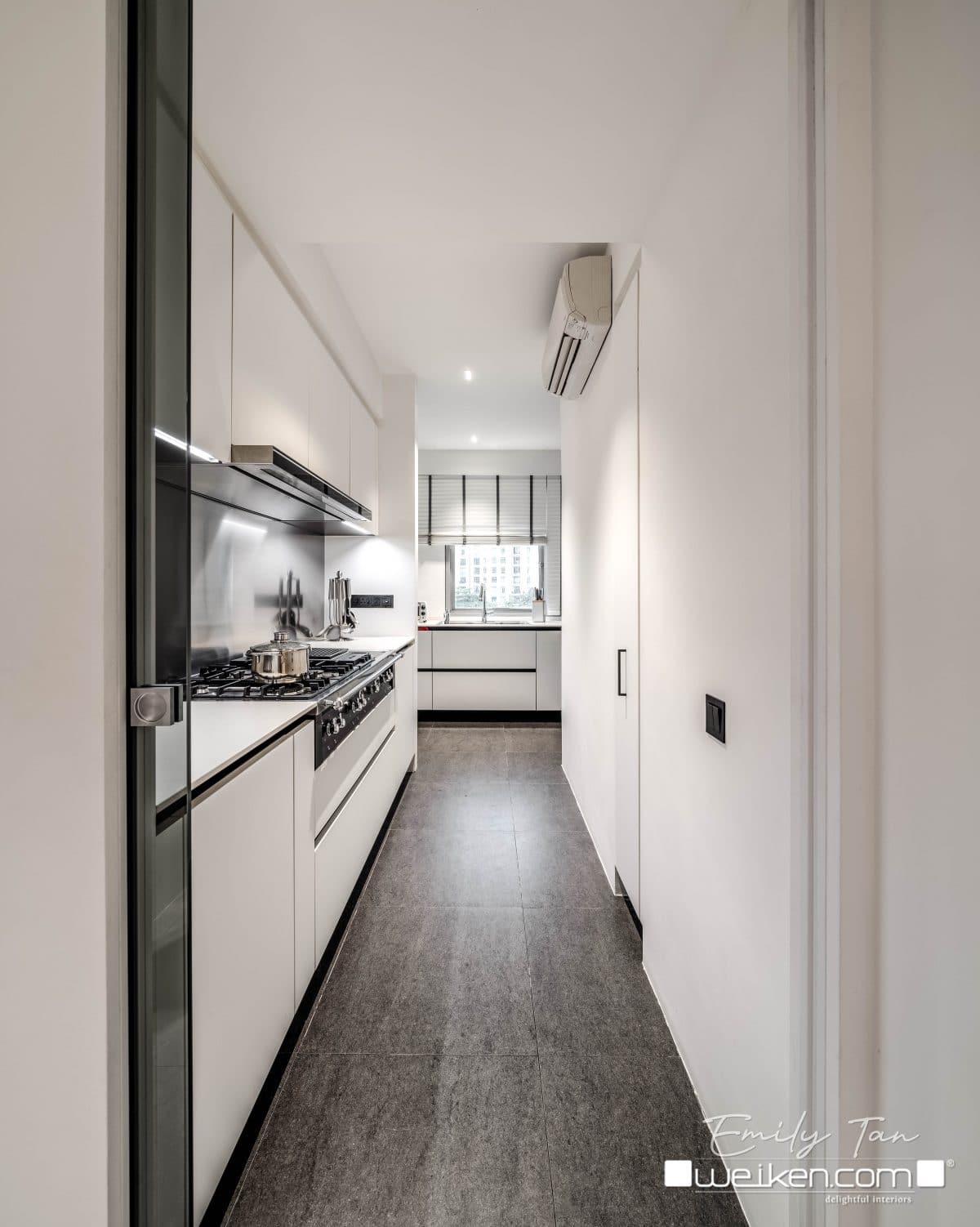
The Minimalism style is one of the most influential design styles in Singapore today. But what distinguishes this design from other design styles and makes it so popular?
This theme aesthetic uses a monochromatic or neutral color palette featuring shades of white, beige, and gray. This creates a backdrop that allows other design elements to stand out. Clean, simple lines contribute to a sense of orderliness. The design values the use of natural light, form, and natural materials.
Elements of Minimalist Design
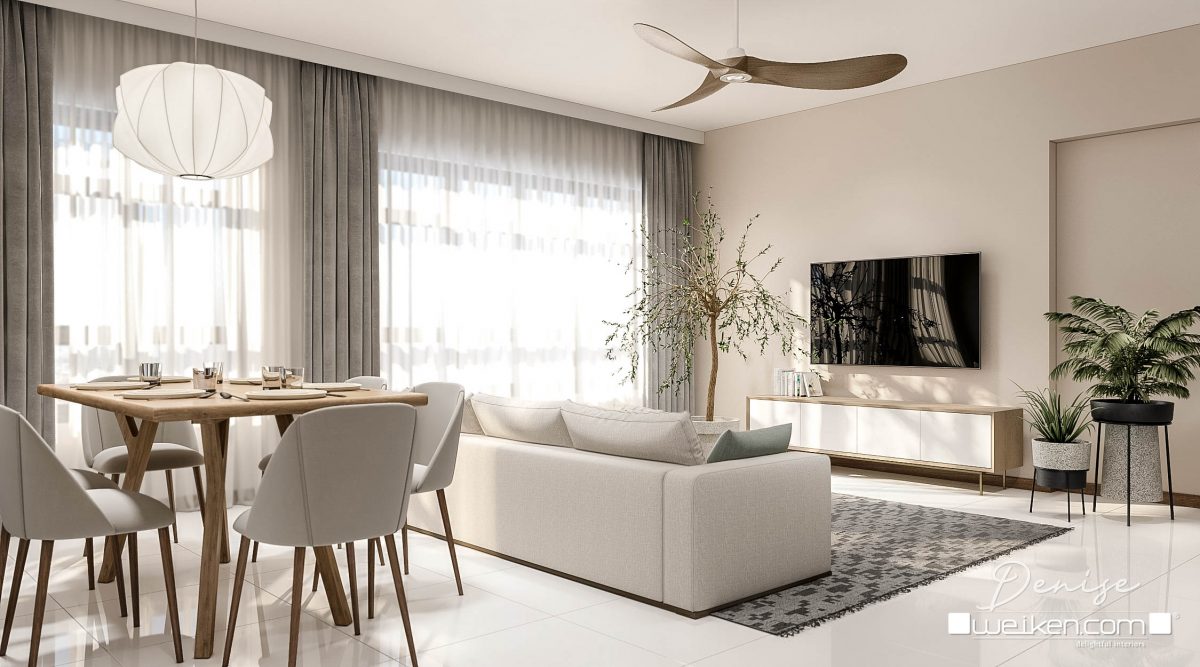
The key elements that contribute to this interior design theme are crucial to achieve the actual “minimalistic effect” and create a delicate balance between simplicity and functionality.
- Colour– Simplify the colour scheme by using neutral tones and avoid extraneous colours. Occasional splashes of muted colors can be strategically introduced but keep it to two or three colours. Similar colours can be layered, for example, light wood tones for the TV console, coffee table, and sofa.
- Furniture– This is where the “less is more” philosophy is critically applied. Furniture pieces that are absolutely necessary with less ornamentation are chosen. Storage solutions that keep the space uncluttered are considered and create a harmonious blend of form and function. This gives the rooms a more spacious visual appearance.
- Textiles– In minimalist home design, clean lines, subtle textures, and neutral base color palettes create a calm atmosphere and introduce laid-back luxury. Fabrics such as linen, cotton, and wool are used for their natural and soft appearance. Simple patterns, like gentle stripes, add interest without overwhelming the space.
A crisp, monochromatic look with coordinating shading palettes can make a living room that is inviting and unwinding.
- Accessories– To create a wonderful space in minimalistic design, you need three basic elements: natural light, shape, and beautiful materials in an open floor plan. Limited ornamentation and decorative objects are used for a simple look. A lovely wall painting or piece of decoration such as a vase can avoid a rather boring look.
- Light– Natural light is a simple opportunity to enhance the aesthetics of any room. Maximizing light using large windows can create a healthy and peaceful indoor atmosphere. With options to include window treatments such as roller blinds or sheer curtains in neutral colours you can enjoy the practical benefits of controlled light and privacy.
With minimalist interior design becoming so popular, different variations have emerged, each with a unique twist. Some examples of such variations include:
Modern Minimalist Interior Design
This design theme is where modern décor meets minimalism. Modern Minimalist Interior Design is inspired by open and simple that were first seen in Japanese homes. It incorporates clean lines, a monochromatic or neutral color palette, natural materials, minimalist decorations, and simple furnishings.
It also focuses on the marriage between technology and aesthetics while prioritizing functionality over unessential overwhelming decoration pieces.
Japanese Minimalist Interior Design
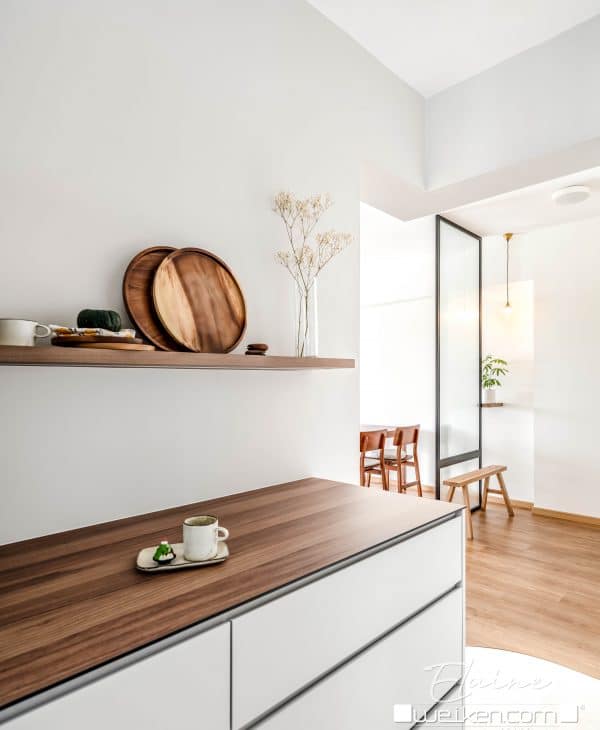
Japanese Minimalism is a concept that follows Japan’s traditional Zen philosophy. This design incorporates a peaceful setting and consists of elements connected to nature. This simple, never-cluttered approach gives off a serene feeling that is reflected in a neutral palette, commonly in shades of white for hinged doorways, cabinets, cupboards, and walls.
Natural light floods the rooms through skylights and glass windows. The absence of nonessential internal walls is encouraged to open up spaces and allow an organic flow between the interior and exterior spaces. This minimalist design theme exudes sophistication and perfectly complements the urban landscape of Singapore making it a favourite choice for Singaporeans.
Minimalist Muji Interior Design
Minimalist Muji Interior Design encapsulates the essence of minimalism and combines it with Zen aesthetic principles. This style is inspired by the famous Japanese retail brand with a philosophy of “No-Brand Quality Goods” to ensure functional and quality household goods and clothing.
Therefore, this Muji style emphasizes functionality using high-quality and well-crafted furniture that can quickly adapt to changing needs. Clean and neat designs that use subtle colors and natural materials including woods, metals, cotton, and linen are favored. Décor pieces in uniform and linear shapes are used to encourage a clutter-free look.
This design theme also features bright and airy spaces and infuses a touch of the outdoors through plants to promote a healthy ambiance.
Extra Information About Muji Theme
The concept of Muji’s interior is exactly the philosophy it advocates: practical, clean, neat, organized and above all, functional. It is not overtly minimal and plain, but rather minimal with a touch of elegance.
About Muji Interior Design
Minimalist Wabi Sabi Interior Design
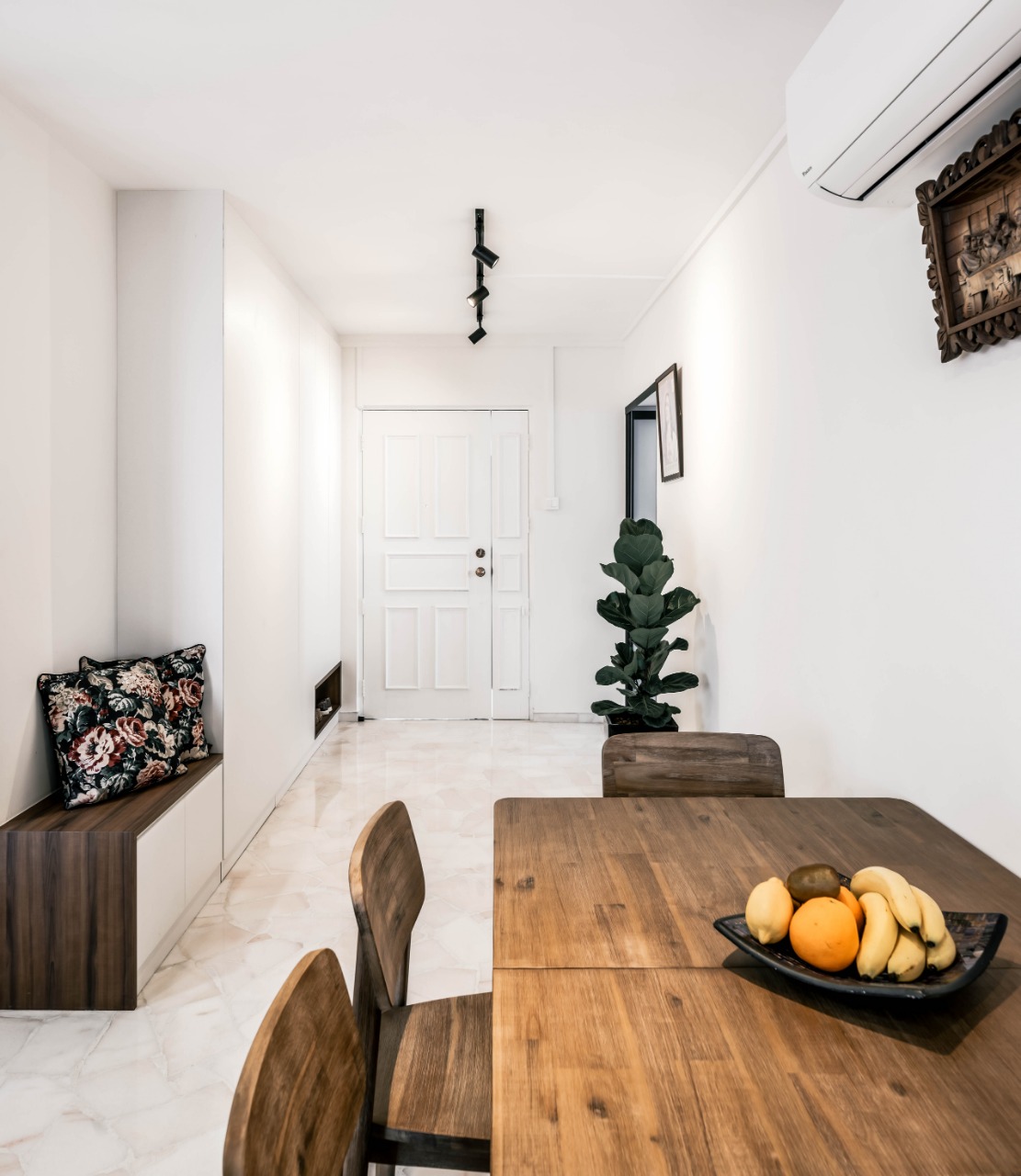
Minimalist Wabi Sabi Interior Design draws inspiration from the Wabi Sabi philosophy and celebrates the beauty of anything that has flaws and imperfections. This means respecting the authenticity of objects in their most natural and raw form.
Start designing a Wabi Sabi home by following the minimalist aesthetic. This design principle features open floor plans with ample natural light to create a spacious looking home. Multi-functional objects or storage solutions are used for clean and organized spaces.
Additionally, organic materials, brutalist furniture, vintage objects, a nature-inspired color palette, rough textures, and greenery complete the look. These are some points that have made this style the most beloved interior design trend in Singapore today.
Conclusion
In conclusion, Minimalist interior design reflects lifestyle choices where each design element has great value in terms of functionality and aesthetics. From its origins in the minimal art movement to its incorporation of Japanese philosophies like wabi-sabi and Muji, minimalist interior design has carved a place in the hearts of Singaporeans.
